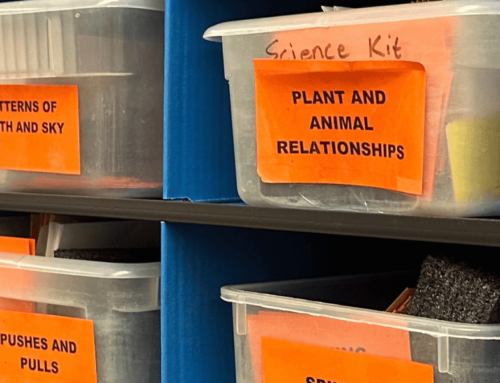Hello and welcome to 2021! I hope you all had a restful, safe, and socially distant winter break. With that said, I would like to share with you all my experiences attending the 2020 Migrant Education Fall Convening via Zoom. Let me say, the conference was epic, full of energy, and had powerful workshops! At first, I had my doubts though! Mainly because I had never participated in a conference or training virtually. I had no idea there was even such a possibility. I was fully engaged from my home kitchen table with snacks in my refrigerator less than 15 feet away!
When I logged into the virtual convening, I noticed only personnel from school districts’ Migrant Education Programs which was good to see! As I participated and observed, I also noticed the presenters were from the Xicanx Institute for Teaching and Organizing (XITO), “an urban education consulting collective and a program of the center for community education,” nonprofit based out of Arizona, who also presented via Zoom! This was all new to me and I buckled in for a ride!
As the convening proceeded, a topic that caught my attention was the “Cultural Wealth of Migrant Students and Families”. The workshop focused on the understanding that migrant students and families arrive in our classrooms and school building, rich in cultural wealth. You might be asking, what is cultural wealth? Don’t worry, I had the same question! As I listened, the presenters described cultural wealth as “an array of knowledge, skills, abilities, and contacts possessed and utilized by communities of color to survive and resist macro and micro-forms of oppression,” (Yosso, 2005, pg. 77). The discussion went on to note that it is our job as educators to uplift the cultural wealth of migrant students/families and continue to explore these assets to make connections in our classrooms and school culture. Honestly, I was enjoying every second of the conversation and could not agree more about the value of this recognition.
As we moved onto group collaboration, the attendees were divided into six break-out groups. Each group represented the six forms of cultural wealth. Each group’s task was to explore the forms of cultural wealth and then provide real-life examples from their respective school districts working with migrant students/families. Below you will find actual school district examples that were shared:
- Aspiration capital: Being able to maintain hopes and dreams even in the face of barriers that communities of color usually encounter
- School Example: “Hopes and dreams from families, and how that motivates both families and students to succeed in life.”
- Linguistic capital: The intellectual and social skills attained through communication experiences in more than one language and/or style (may include oral history telling, cuentos, dichos etc.).
- School Example: “Code Switching,” “Bilingual/Trilingual,” “Spanglish”
- Familial capital: Cultural knowledge nurtured among familia that carry a sense of community history, memory and cultural intuition.
- School Example: “Family recipes/knowledge and traditions,” “Curanderismo and ways of healing”
- Social capital: Networks of people and community resources that are used in communities of color to try and overcome oppression.
- School Example: “Tribal Community Resources,” “Migrant Program Staff that helps connect families to community resources,” “comadrismo y compadrismo”
- Navigational capital: Skills of maneuvering through social institutions
- School Example: “Forging DIRECT pathways for families to be able to access district resources independently and provide support as needed”
- Resistant capital: Knowledge and skills fostered through oppositional behavior that challenges inequality.
- “Having students talk about injustices/barriers they are facing in the schools/community and being provided with the tools for them to dissolve the barriers and succeed in education and community”
So much collaboration was taking place, it was hard to keep up. Going from one break-out session to the next so quickly, I tried to listen in and take notes on the great work related to each area of cultural wealth for migrant students/families in school districts.
In conclusion, there was not enough time to go as far in-depth as I would have liked! The training though had plenty of information to get participants started in their own work with migrant families and students and the six forms of cultural wealth. As your friend, I thank you for taking the time to read my experience attending the 2020 Migrant Education Fall Convening and I challenge you to also explore the six forms of the cultural wealth of the students and families furthest away from educational justice in your school district!




